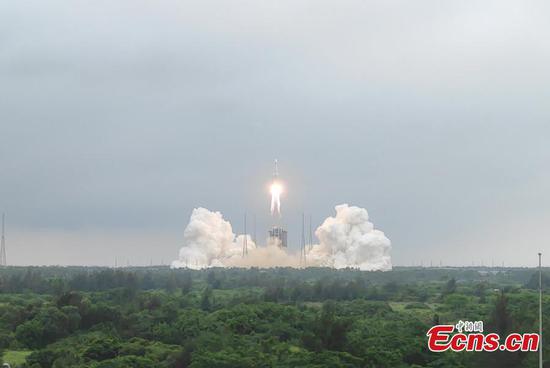
A Long March 5B rocket carrying the core module of China's space station is sent into space at 11:23 a.m. Beijing time from the Wenchang Space Launch Center in South China's Hainan Province, April 29, 2021. (Photo/China News Service)
China on Thursday sent into space the core module of its space station, kicking off a series of key launch missions that aim to complete the construction of the station by the end of next year.
The Tianhe module will act as the management and control hub of the space station Tiangong, meaning Heavenly Palace, with a node that could dock with up to three spacecraft at a time for short stays, or two for long.
The space station will be a T shape with the core module at the center and a lab capsule on each side. Each module will be over 20 tonnes. When the station docks with both manned and cargo spacecraft, its weight could reach nearly 100 tonnes.
The station will operate in the low-Earth orbit at an altitude from 340 km to 450 km. It has a designed lifespan of 10 years, but experts believe it could last more than 15 years with appropriate maintenance and repairs. |